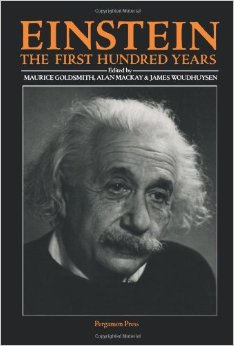The future of higher education and IT
 First published by Universities and Colleges Information Systems Association (UCISA), November 2013
First published by Universities and Colleges Information Systems Association (UCISA), November 2013There was a time when universities and higher education led many other sectors of the economy in their research about and use of IT. How do we get that position back? How do we make IT easier to use, without dumbing students down? How do we improve the visualisation of university data? What are the merits, and also the limits, of Massive Open Online Learning Courses (MOOCs)? Lastly, how should universities and higher education plan for the next wave of IT innovations, rather than just responding to the last wave?
Click on this ‘The future of higher education and IT’ link to view the video of James’ speech. Register basic details to view this video – no membership required.
This conference contribution raises numerous questions regarding the challenges facing IT within universities and higher education… and points towards some of the possible answers to these challenges.
In order to make sense of the challenge at hand, James uses examples of post war debates and innovations to illustrate how different the cultures of Europe and America were with those of today. He argues that the post war decades compared positively to the unfavourable climate of today. Rather than the ambitious vision and long term planning of the 1950s and 1960s, we now have instrumentalism and an exaggerated sensibility of risk. Bold investments are replaced by the current preference of large corporations to hoard cash in vast quantities in banks rather than invest profits in R&D. This deadening climate is compounded further by the overblown claims made around the transformational impact IT is having on today’s society.
What should universities and higher education do instead? Their IT should be grounded in broad experience across many industries and sectors. Universities need to be leaders and promote the importance of curiosity rather than increasing impact research – after all, as Einstein said, “If we knew what it was we were doing, it would not be called research, would it?”
James elaborates what this means. Rather than pander to ‘student experience’ (an expression that the students of the 1960s would have taken to mean something very different!), IT needs to actively engage with academics and students to understand what they want to achieve and then help them to do so. He sees this, not as a technical discussion but rather, as one that should be informed by a contemporary pedagogy of learning, agreed through debate and discussion. Technical advances should reflect this pedagogy – learning should be reflected in dramatic improvements in access to academic and learning resources and through improved interfaces, videos, animation; the perennial problems of timetabling and navigation around campuses should be resolved; visualisation of content should be greatly improved… and all at a rapid pace.
Rather than flatter students and reinforce a narcissistic culture that currently thrives around self-learning, gaming and play (reflected in the MOOCs industry), a culture of respecting accumulated knowledge should be promoted through the encouragement of curiosity and scholarship associated with books and study.
In summary, if IT within universities and higher education wishes to re-establish itself back at the head of the field, it needs to… strike out alone; support development of new knowledge; take risks; and experiment.
Fmr President of Kenya on Trump cutting off foreign aid:
“Why are you crying? It’s not your government, he has no reason to give you anything. This is a wakeup call to say what are we going to do to help ourselves?”
America first is good for the world.
Our entire Green Socialist establishment should be banged up under the ‘Online Safety’ laws, for spreading demonstrable lies (the ‘climate crisis’), causing non-trivial harm to the industrial working class, ordinary drivers, farmers, taxpayers etc, etc.
#Chagos? #Mauritius PM Navin Ramgoolam "is reported to want Starmer to pay £800m a year, plus ‘billions of pounds in #reparations’." (14 January) https://www.spiked-online.com/2025/01/14/the-chagos-islands-deal-is-an-embarrassment/
Now the Torygraph wakes up https://telegraph.co.uk/gift/1ff8abbb462cd609
Read @spikedonline - first with the news!
Articles grouped by Tag
Bookmarks
Innovators I like

Robert Furchgott – discovered that nitric oxide transmits signals within the human body

Barry Marshall – showed that the bacterium Helicobacter pylori is the cause of most peptic ulcers, reversing decades of medical doctrine holding that ulcers were caused by stress, spicy foods, and too much acid

N Joseph Woodland – co-inventor of the barcode

Jocelyn Bell Burnell – she discovered the first radio pulsars

John Tyndall – the man who worked out why the sky was blue

Rosalind Franklin co-discovered the structure of DNA, with Crick and Watson

Rosalyn Sussman Yallow – development of radioimmunoassay (RIA), a method of quantifying minute amounts of biological substances in the body

Jonas Salk – discovery and development of the first successful polio vaccine

John Waterlow – discovered that lack of body potassium causes altitude sickness. First experiment: on himself

Werner Forssmann – the first man to insert a catheter into a human heart: his own

Bruce Bayer – scientist with Kodak whose invention of a colour filter array enabled digital imaging sensors to capture colour

Yuri Gagarin – first man in space. My piece of fandom: http://www.spiked-online.com/newsite/article/10421

Sir Godfrey Hounsfield – inventor, with Robert Ledley, of the CAT scanner

Martin Cooper – inventor of the mobile phone

George Devol – 'father of robotics’ who helped to revolutionise carmaking

Thomas Tuohy – Windscale manager who doused the flames of the 1957 fire

Eugene Polley – TV remote controls



0 comments